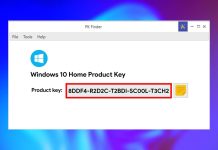The idea of food packing has been around for aeons in a variety of forms. Originally, this idea was only applicable to the storing and storage of preserves, butter, and other milk products, but as time has gone on, it has expanded to include a wide range of products. Today’s market offers a variety of packaged products in bottles and jars that the general public had never even considered. Here, we’ll discuss the various kinds of food packing containers, as well as their advantages and disadvantages. In conclusion, you will be able to determine whether or not these packaged foods are wholesome for our daily routine.
Categories:
The following kinds of packaged foods are used primarily to protect food from immediate exposure to the outdoors and extend shelf life. For the particular item that is to be packaged, a certain kind of jar or can is used.
Glass Vessels
Pickles are typically stored in glass jars to preserve their flavor, color, and aroma for an extended period of time. Lemons, olives, mango pickles, and other foods of similar nature are often packaged in glass jars to prevent contamination from the color or substance of the storage container.
Containers
Another form of the storage container is the bottle, which is useful for packaging dairy products like milk and buttermilk. In addition, plastic bottles are used to store cold beverages, juices, water, etc.
Bins
Similar to glass jars, glass bins are also used to store food, and they can both be used equally. In order to keep fresh fruits germ-free, you can see them being kept in glass jars with acids. Fish, poultry, and other items of this nature are occasionally packaged in glass jars.
Crates
Each of us is very acquainted with the term “processed food,” which also contains baby food, carbonated beverages, and sports drinks, among other things. Cans are a very traditional-looking packaging fad, but they are more expensive than other packaging options.
Cardboard Container
Because cereals, juices, prepared foods, processed foods, and other items are packed in cardboard, we must include it in this list.
Benefits of Packaged Products in Bottles and Jars
Chutneys, jellies, and jams have a lengthy shelf life. The amount of time a product can be kept in glass and plastic receptacles extends its useful life significantly. Fresh olives can be preserved unchanged for a year with the aid of glass jars and packing, though.
Hygienic Food Wrapping
When food is preserved in jars or packages, it becomes virtually germ-free and the likelihood of microbial contamination is significantly reduced. Therefore, there is no need to be concerned about the pathogens if you are purchasing canned or jarred food.
Secure Delivery Options Worldwide
Food that has been packaged in plastic water bottles, bottles, and containers can be securely transported across boundaries without the worry of spilling or leaking.
Reusable Metal and Glass Vessels
The fact that plastic bottles and cans are reusable and thus environmentally favorable is one of the main advantages that you can enjoy from using them. Even if you buy something in one of these jars, you can still use the extra jars to store your products.
Don’t Compromise on Color of Meal
If you don’t care about the packaging of your food, it will be tough to preserve its new flavor, colour, and aroma. Glass jars ensure that food is only minimally exposed to the carton in which it is stored, which is why when food is packed correctly, you hardly ever notice any changes.
The disadvantage of Packaged Products in Bottles and Jars
Expensive Packing
One of the most notable disadvantages of storing food in jars and bottles is that sometimes the cost of the containers outweighs the cost of the food inside. Because glass containers are significantly more expensive, many people choose not to use them.
Glass Containers are Susceptible to Break
Glass jars need to be used with extreme caution because if they are not, they will break easily. This is especially true at home when there are children present. Furthermore, there is a good possibility that these jars will break while being transported or delivered over long distances.
Conclusion
Thus, while it is helpful to use glass bottles, jars, and cans alongside them, there are also some drawbacks that must be acknowledged. Everything has two phases, and the packaging of goods is no different. It has more advantages than disadvantages.
Related Post: SQM Club










